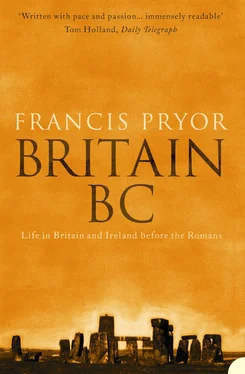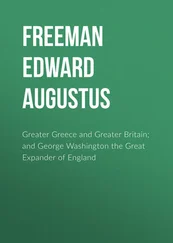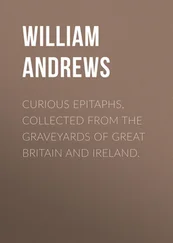Once in a while it happens that an archaeologist excavates a site and publishes a report in which he speculates about its date and function, then someone else comes along ten years later, with the improved techniques of the time, and proves him right or wrong. It happened to me a few years ago, and I was proved wrong – but in the nicest possible way. 20 It happened to John Wymer too – and of course he was proved right. Another spread of flint on the same ridge, but about two hundred metres to the north-west, was excavated in 1989. 21 This revealed a pattern of sharp rises and falls in the density of flints found on the ancient surfaces, just as John had done, but the excavators now had available the newer technique of microwear, or use-wear, analysis. Essentially this is a way of examining microscopic damage to the scraping and cutting edges of flint tools, but it requires flints from sealed contexts, such as Thatcham (where the occupation levels were covered by a layer of peat), otherwise it’s hard to discount the ‘noise’ caused by more recent, post-depositional effects, such as plough damage.
The technique relies on the controlled experimental ‘use’ of flints, which are then examined, and the results compared with the ancient material. The microscopic edge-damage found at kill or butchery sites is very characteristic and includes, as one might expect, evidence for percussion and harsh damage, when joints are severed and bones are broken. There will also be arrowheads and projectile points at such sites. A domestic site – a home-base, in other words – produces a far more diverse pattern of edge-wear. The heavy-duty percussive damage tends to be lacking, as are quantities of arrowheads, and there are more signs of scraping hides and sinews, and of cutting soft materials, such as vegetable matter. The range of flint implements found at Thatcham, and the edge-wear revealed in the microwear analyses, showed that it had indeed been a domestic site. John had been right: it was a true home-base.
It cannot have escaped attention that up till now I have been writing about Britain alone – as if Ireland was floating out over the horizon, miles away in the Atlantic. Of course it wasn’t, but neither was it inhabited by human beings in the Ice Age, with the possible exception of the odd visitor or two at the close of the Lower Palaeolithic. 22 For practical purposes Ireland’s earliest Stone Age was the Mesolithic. It is a very well-preserved Mesolithic, with some fascinating stories to tell.
I have a soft spot for Ireland and the Irish. My mother came from an old Anglo-Irish family who went to Ireland in the sixteenth century, essentially as English mercenaries to fight in the Desmond Wars of County Wexford. They built a moated tower house, Huntington Castle, on the borders of Counties Wexford and Carlow in 1625, and are living there to this day. My grandmother, Nora Robertson, wrote a wonderful account of the Anglo-Irish Ascendancy which I keep by my bed and dip into regularly. 23 I have never had the privilege of excavating in Ireland, but I would love to do a dig there one day.
It is well known that Ireland has a long tradition of close relations with the United States, and this extends to archaeology, too. I remember when I worked at the Royal Ontario Museum in the early 1970s being recommended to read the reports of the Harvard University Irish Project of the 1930s. Not only were these a model of how to do good field archaeology, but they were published promptly and in sources that were readily accessible to the ‘natives’, and in a language that they could understand. This was in contrast to what was going on elsewhere in the world, especially in the Near East, Western Asia and South America. I can imagine how indignant I’d feel if the standard reference work on the archaeology of East Anglia was published in Russian.
Ireland was cut off from the rest of Britain by rising sea levels at some time around 7500 BC. Thereafter anyone wishing to settle in what we still assume was an uninhabited island had to come by way of a short sea crossing. Actual physical evidence for Earlier Mesolithic boats has yet to be found in Britain, but dug-out, canoe-style logboats have been found in Denmark, 24 and possible logboats of the Mesolithic to Neolithic transition period are known in Britain. 25 These are generally too rigid and inflexible for long sea-crossings, unless fitted with outriggers or double hulls, and would more likely have plied inland waterways such as Lake Flixton (a possible paddle was found at Star Carr). We also know from rock carvings in Scandinavia and elsewhere that skin-covered craft existed in prehistory. These would have been similar to the curraghs that I remember seeing bobbing about in the Atlantic surf off County Galway as a boy. Such vessels could perfectly well have crossed the narrow channel separating Britain from Ireland in the mid-eighth millennium BC.
For a long time the version of the Irish Mesolithic established by the Harvard expeditions of the 1930s held sway, but then a young archaeologist working close to the river Bann, in County Antrim, changed all that. Peter Woodman’s discoveries at Mount Sandel, a settlement on a thirty-metre-high bluff or sandy bank alongside the river, showed that the gap that separated the world of the hunter/gatherers and the very first (Neolithic) farmers was by no means as wide as we used to believe. He has also helped to fill in that central void at Thatcham – the one surrounded by hearths and huge numbers of flints. I remember well when the first pictures of his dig appeared in the archaeological literature. I couldn’t believe my eyes: his meticulous excavations had revealed the clearest evidence possible for lightweight, tent-like houses built by these hunters of the Later Mesolithic.
The site has been dated by radiocarbon to about 6500 BC, so it’s significantly later than Thatcham or Star Carr, but in many respects it’s quite similar. 26 It’s positioned near water in woods of birch and hazel, but unlike either English site, Peter Woodman’s excavations produced huge quantities of fishbones, of which salmon and sea trout were by far the commonest. This gives us an important clue as to the time of year the site would have been occupied. Both fish are migratory, and enter rivers from the sea to spawn in summer and autumn. It seems most probable that this was when the site was occupied. We don’t know where the occupants went for the rest of the year, although the seaside is a possibility. Other evidence shows that their food was not confined to these very delicious fish; they also ate eel, wild pig, various birds including game birds, and hazelnuts. I can think of worse diets.
Mount Sandel is principally famous for its lightweight houses, which are still, I believe, the oldest proven domestic structures in the British Isles. There were two types. Six examples of the first type were found. It consists of a roughly circular or oval arrangement of angled stake- or post-holes, plus a doorway; sometimes there’s also evidence for a central hearth. The house was probably built from curved or hooped poles covered with hides, and the average size was just over five metres across, giving a floor area of about thirty square metres, which is broadly comparable with the ‘void’ area at Thatcham.
The second type of house was more tent-like, and about half the size of the hooped pole structures. It consists of four banana-shaped, shallow ditches or gullies arranged in a rough circle. Presumably these were dug to take the run-off of water from a tent-like structure. There’s no evidence for post-holes, so we must assume the framework didn’t need to be securely anchored, being structurally stable and able to shed all but the severest of gales. In this instance the hearth was positioned outside, but opposite, the entranceway.
Читать дальше












